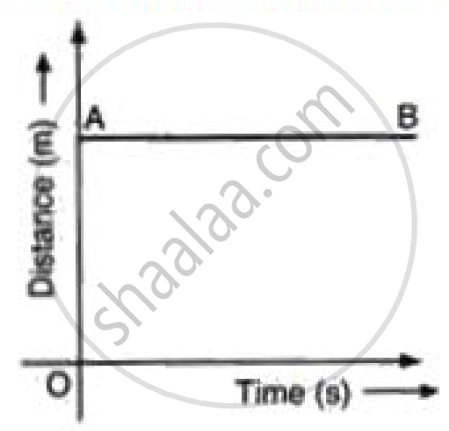Advertisements
Advertisements
प्रश्न
From the velocity – time graph given below, calculate Distance covered in the region ABCE.

उत्तर
Distance covered in region ABCE = ar(ΔABF) + area of trapezium BCEF
= `1/2xx"AF"xx"BF"+1/2("BF+CF")xx"GC"`
= `1/2xx12xx14+1/2(14+6)xx4`
= 6 × 14 + 10 × 4
= 84 + 40
= 124 m
APPEARS IN
संबंधित प्रश्न
What can you say about the motion of a body if its speed-time graph is a straight line parallel to the time axis ?
Draw a velocity-time graph to show the following motion :
A car accelerates uniformly from rest for 5 s ; then it travels at a steady’ velocity for 5 s.
Diagram shows a velocity – time graph for a car starting from rest. The graph has three sections AB, BC and CD.

Compare the distance travelled in section BC with the distance travelled in section AB.
Given on th e side are a few speed - time graphs for various objects moving along a stra ight line. Refer below figure. (a), (b), (c) and (d).
Which of these graphs represent
(a) Uni form motion
(b) Motion with speed increasing
(c) Motion with speed decreasing and
(d) Motion with speed oscillating.?
What does the slope of speed-time graph indicate?
What can you say about the nature of motion of a body of its displacement-time graph is:
A straight line parallel to line axis?
Draw distance-time graph to show:
Uniform velocity
Draw velocity-time graph to show:
Zero acceleration
Write a sentence to explain the shape of graph.
Interpret the following graph:
What does the slope of velocity-time graph represent?
